The Unsung Heroes of Your Garden: A No-Nonsense Guide to Evergreen Shrubs
You know, after spending a couple of decades with my hands in the dirt, I’ve seen what makes a garden truly special. The most stunning, resilient gardens all have one thing in common: good bones. And that sturdy framework almost always comes from evergreen shrubs. They’re the ones holding down the fort with color when the summer flowers are just a memory, and they give your yard shape and life during those bleak winter months. Honestly, they’re the reliable foundation that makes everything else look good.
In this article
A lot of people hear “evergreen” and picture a boring green cone or a perfectly sheared meatball. But that’s not the whole story! The world of evergreen shrubs is packed with incredible textures, colors, and shapes. Picking the right one isn’t just about what looks cute in a pot at the nursery. It’s about knowing your sunlight, your soil, and what you want your garden to look like in a few years. This guide is built on my own trials and, yes, a few spectacular failures. Let’s get you set up for success from day one.
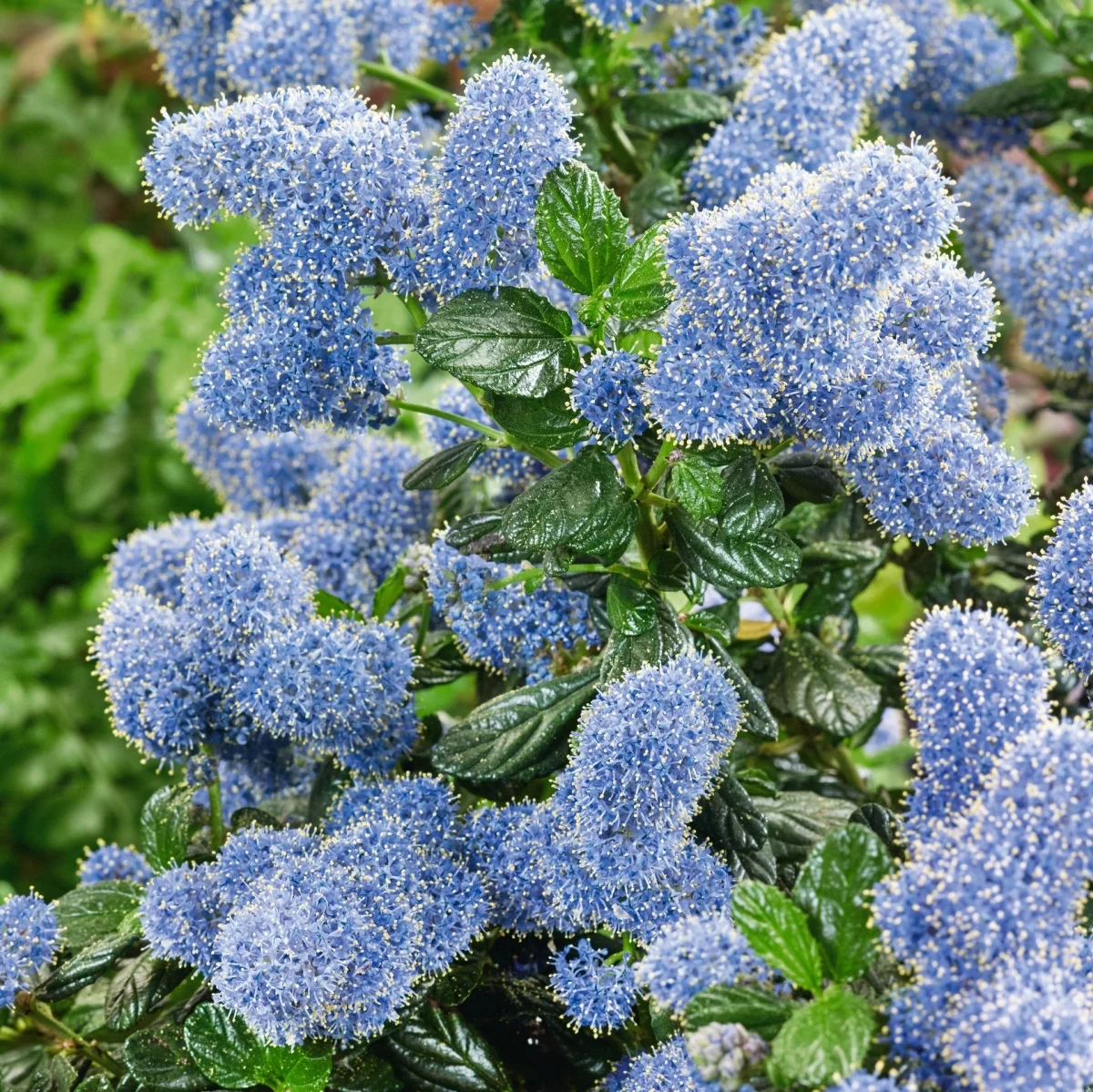
First Things First: What Makes an Evergreen Tick?
Before we jump into my favorite plants, let’s quickly cover what we’re dealing with. “Evergreen” doesn’t mean a plant’s leaves live forever. It just means it holds onto its foliage for more than one growing season, unlike deciduous plants that go bare every fall. This gives them a huge head start in the spring.
They’ve developed some clever tricks to survive the cold. Broadleaf evergreens like Rhododendrons, for instance, have leaves with a waxy coating that locks in moisture. This is a huge deal when the ground is frozen solid and the roots can’t drink. It prevents something called winter desiccation, which is basically a plant dying of thirst in the cold. Needled evergreens like pines do the same thing with a much smaller surface area. It’s brilliant, really.
Good to know: This is exactly why one of the best things you can do for your evergreens is to give them a deep, long drink of water in the fall, right before the first hard freeze. You’re essentially helping them fill up their tank for the long, dry winter ahead.
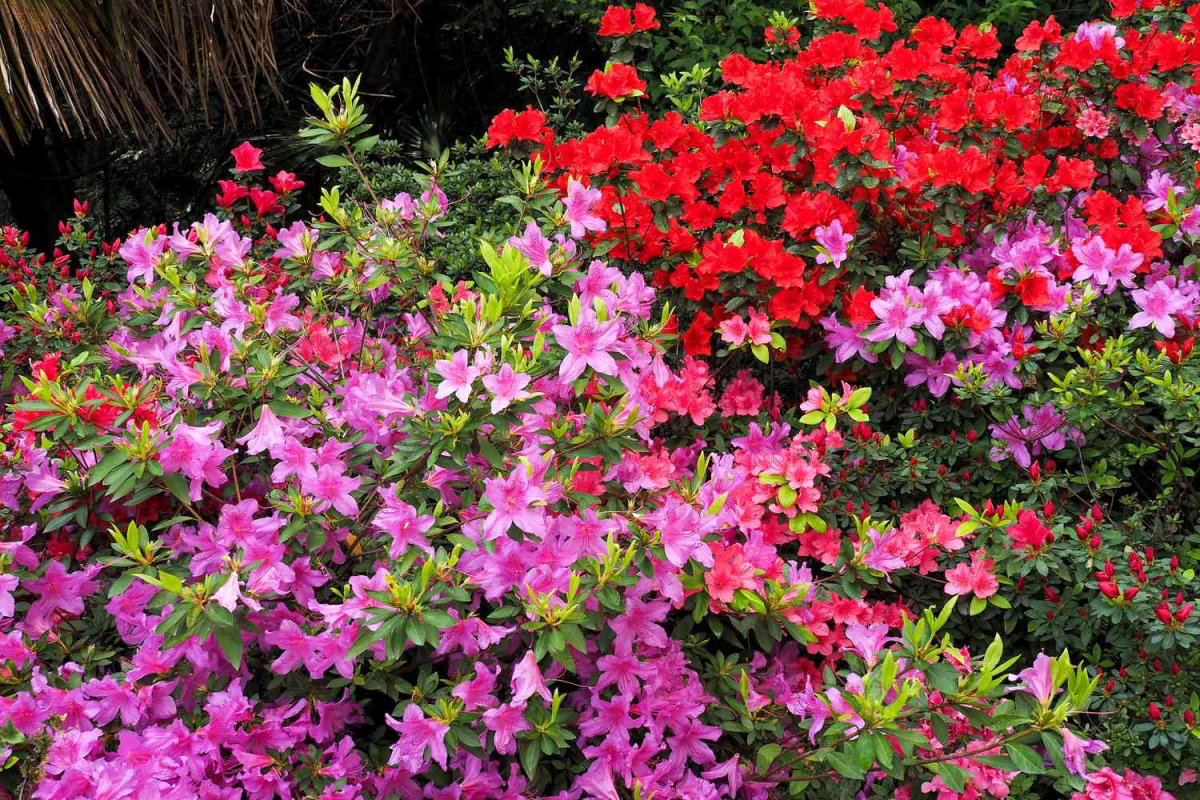
The Best Time to Plant
Okay, so when should you actually put these in the ground? While you can technically plant them in the spring, I’m a huge fan of fall planting for most evergreens. The soil is still warm, which encourages roots to grow, but the air is cool, which puts less stress on the plant. Planting in the fall gives them a long runway to get established before the heat and potential drought of the next summer arrives. Just be sure to get them in the ground at least six weeks before the ground freezes solid in your area.
The Foundation of Everything: Your Soil
I cannot say this enough: your success begins and ends with the soil. The number one killer of these beautiful shrubs? Wet feet. Soil that stays soggy, especially in winter, will suffocate and rot the roots. You can do a quick, easy drainage test. Dig a hole about a foot deep and a foot wide and fill it with water. If it drains away in a few hours, you’re in great shape. If there’s still a puddle there the next morning, you’ve got some work to do before you plant.
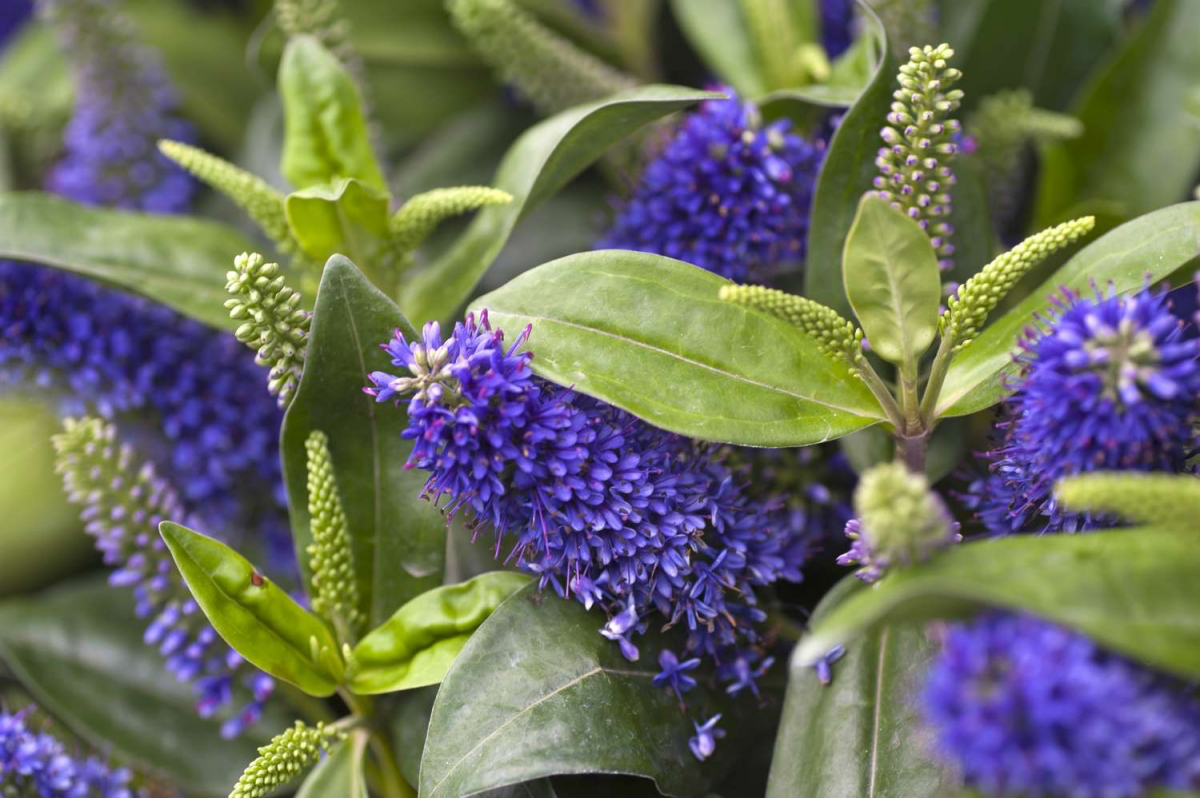
Heads up! A lot of these plants have specific needs, but good drainage is the universal rule. Don’t skip this step.
My Go-To Evergreen Shrubs for Almost Any Garden
This list is my personal hall of fame. I’ve planted these in tons of gardens and trust them to perform. I’ll give you the real-world specs and care tips that actually work.
1. Evergreen Azalea (Rhododendron family)
These guys are famous for their jaw-dropping spring flower show, but their glossy leaves provide great texture all year. Be careful when you buy them, though—make sure the tag explicitly says “evergreen.” There are tons of varieties, but the Kurume hybrids are classics, and some of the newer series even rebloom in the fall.
- Mature Size: Varies wildly by type, from 2-3 ft. compact mounds to 6-ft. shrubs. Check the plant tag!
- Growth Rate: Generally slow to moderate.
- Price Range: Expect to pay $30-$50 for a healthy 2-gallon plant.
- Deer Resistance: They’ll usually leave them alone, but a hungry deer will try anything once.
Azaleas are acid-lovers and need soil with a pH between 4.5 and 6.0. If your soil is alkaline, the leaves will turn a sickly yellow. A simple soil test kit from a garden center can save you a lot of guesswork. When I plant one, I dig a hole twice as wide as the pot but no deeper. I backfill with a mix of one-third native soil, one-third compost, and one-third finely shredded pine bark. Pro tip: If your soil is heavy clay, use less of it and more of the good stuff. Never, ever plant an Azalea deeper than it sat in its nursery pot.
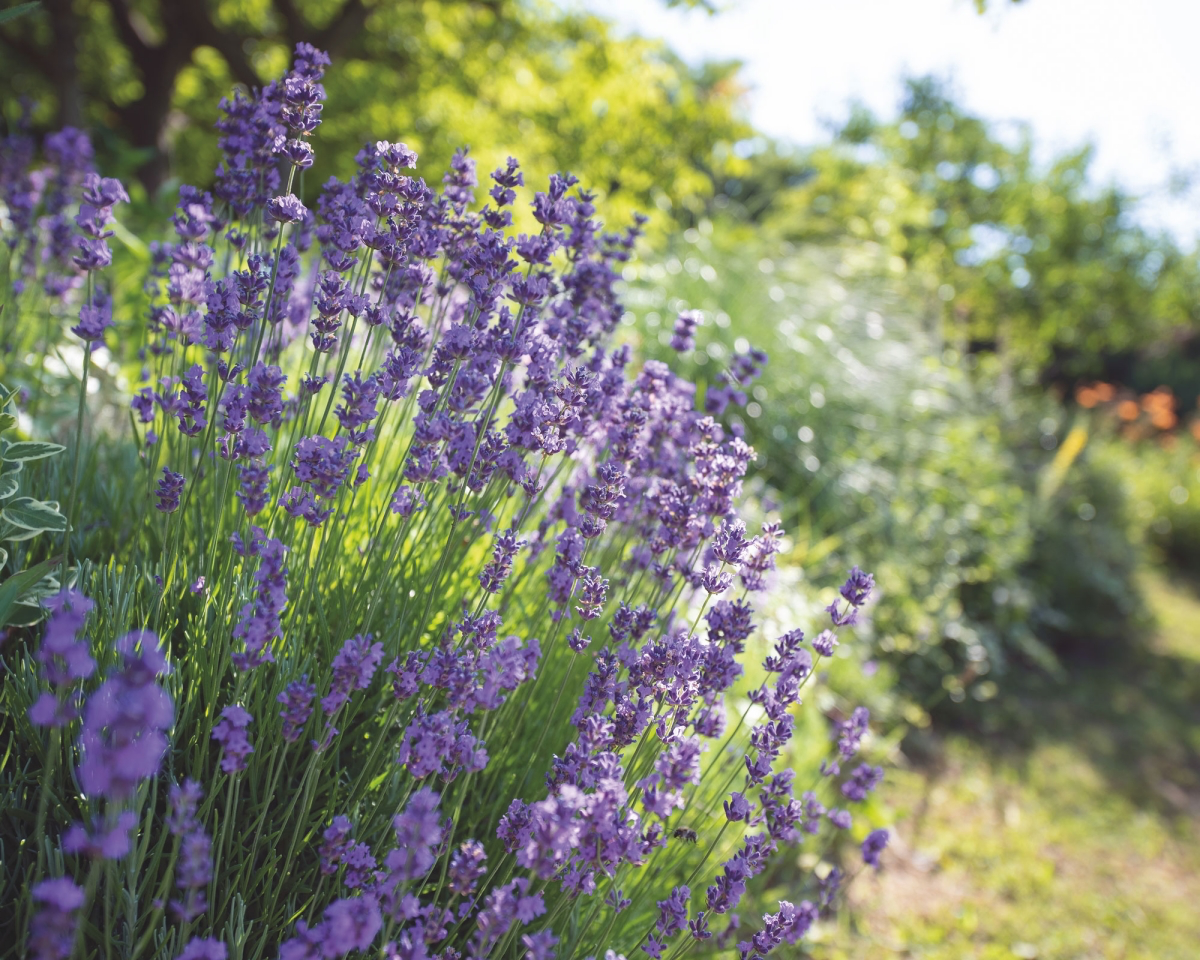
2. Hebe
These are fantastic shrubs that bring a unique, fine-textured look to the garden. The foliage can be anything from deep green to silver or variegated, and many get beautiful spikes of flowers that bees go crazy for. They come in all sizes, from tiny groundcovers to large, rounded shrubs.
- Mature Size: From 1 ft. rock garden gems to 5 ft. shrubs.
- Growth Rate: Moderate.
- Price Range: Around $25-$45 for a 1 or 2-gallon pot.
- Deer Resistance: Generally good; deer tend to ignore them.
I have to share a lesson I learned the hard way with Hebes: they demand excellent drainage. I once lost a whole row of them over a single wet winter in clay soil I thought I’d fixed. Now, unless the soil is naturally sandy, I plant them on a raised mound or in a dedicated raised bed. A mix heavy in grit or small gravel is key. They also need full sun to stay compact and a spot sheltered from harsh winter winds.
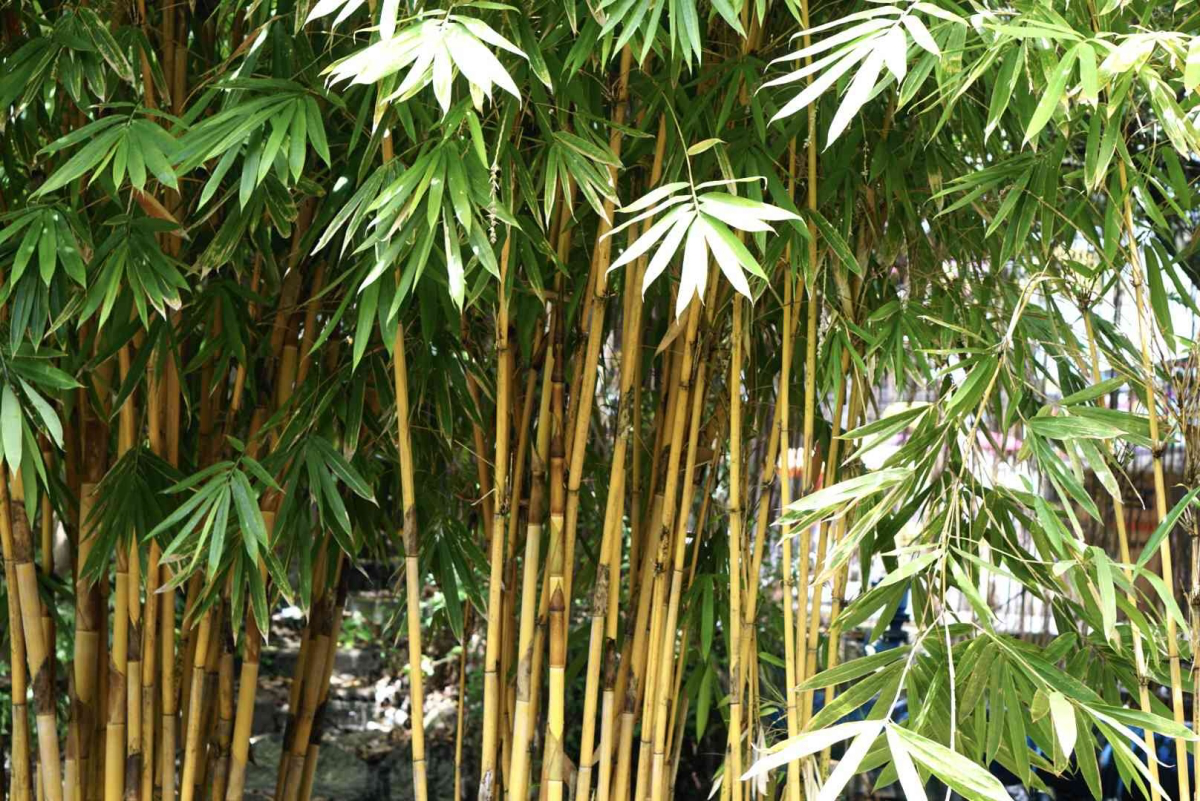
3. English Lavender
Most people think of Lavender as an herb, but it’s technically a woody sub-shrub. It keeps its gorgeous silvery-gray foliage all winter, which looks amazing against a dark, dreary landscape. It’s the perfect choice for a hot, dry, sunny spot.
- Mature Size: Typically 2-3 ft. tall and wide.
- Growth Rate: Moderate.
- Price Range: A small plant will run you $10-$20.
- Deer Resistance: Excellent. Deer hate the smell.
Lavender is a plant you can easily kill with kindness. It hates rich soil and too much water. When you plant it, don’t add any compost or fertilizer to the hole. And pruning isn’t optional—it’s essential. If you don’t, it gets woody and splits open. The trick is to cut the whole plant back by about a third in early spring, just as you see new growth emerging. A light trim after the first bloom can encourage more flowers.
4. Clumping Bamboo (Fargesia family)
Bamboo can be a showstopper, creating a dense privacy screen faster than almost anything else. But listen up, because this is probably the most important advice in this whole article. You MUST choose the right type. There’s running bamboo, which sends out aggressive underground runners that can destroy driveways and invade your neighbor’s yard. It’s a nightmare. For residential gardens, I exclusively recommend clumping bamboo. It expands slowly from the center, like a normal ornamental grass, and won’t take over your life.
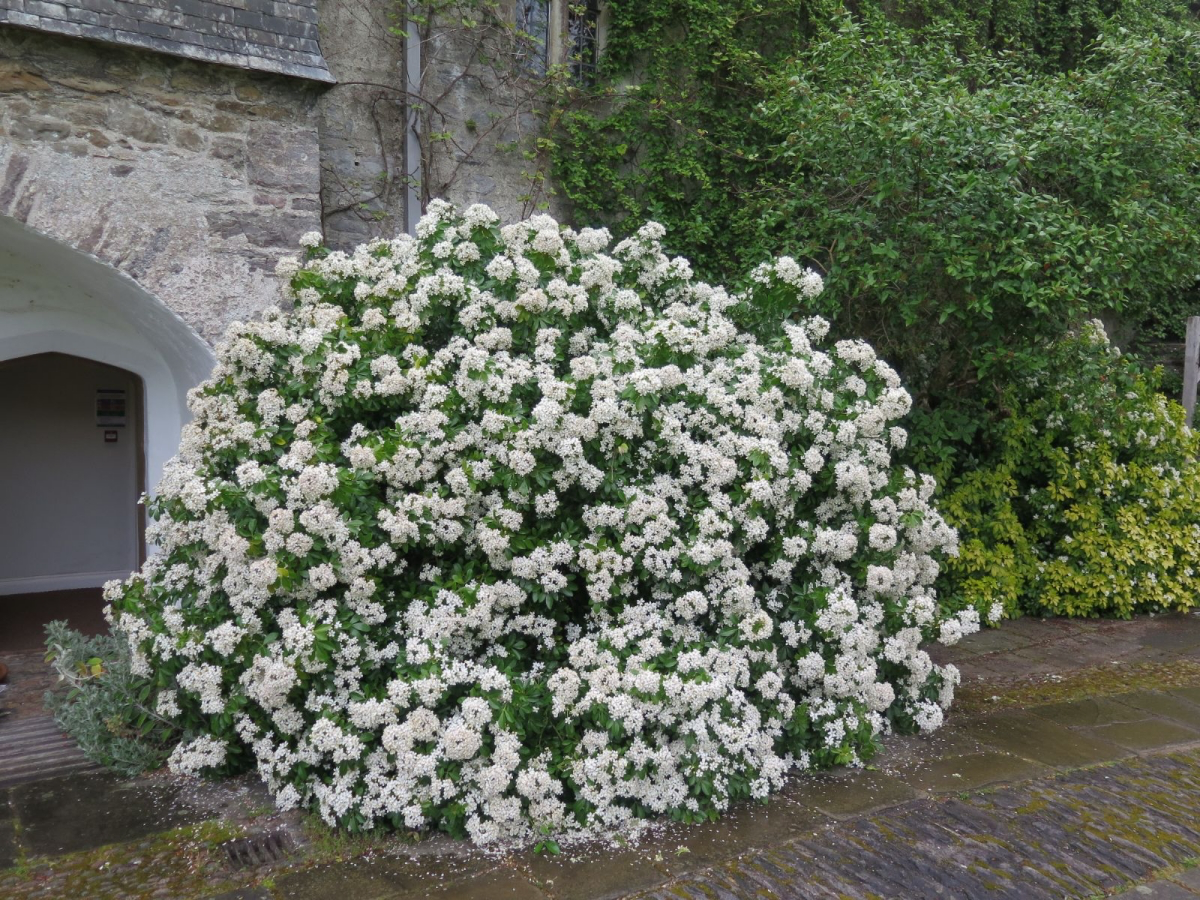
- Mature Size: Most common types reach 10-15 ft. tall.
- Growth Rate: Fast. Can reach its full height in just a few years.
- Price Range: This is an investment. Expect $80-$150+ for a decent-sized clump.
- Deer Resistance: Very high.
Clumping bamboo likes rich soil and consistent moisture, especially when it’s young. If someone insists on a running variety, I make them install a 30-inch-deep rhizome barrier—a thick plastic sheet you bury in the ground. By the way, you can find this barrier material at specialty landscape supply stores or online, but it’s a major project to install.
5. Mexican Orange Blossom (Choisya ternata)
If a beginner asked me to recommend one evergreen, this would be it. It’s low-maintenance, has glossy bright green leaves, and in late spring, it’s covered in fragrant white flowers that smell just like an orange grove. It’s wonderfully adaptable.
- Mature Size: A nice 6-8 ft. tall and wide.
- Growth Rate: Moderate, about 12-18 inches a year.
- Price Range: About $25-$40 for a 2-gallon pot at places like Home Depot or Lowe’s.
- Deer Resistance: Usually ignored by deer.
It’s not picky, thriving in full sun or part shade, and it isn’t fussy about soil as long as it has decent drainage. Water it regularly its first year, and it’ll be pretty drought-tolerant after that. The ‘Sundance’ variety has stunning yellow leaves (but can scorch in intense sun), while ‘Aztec Pearl’ has finer, more delicate foliage.
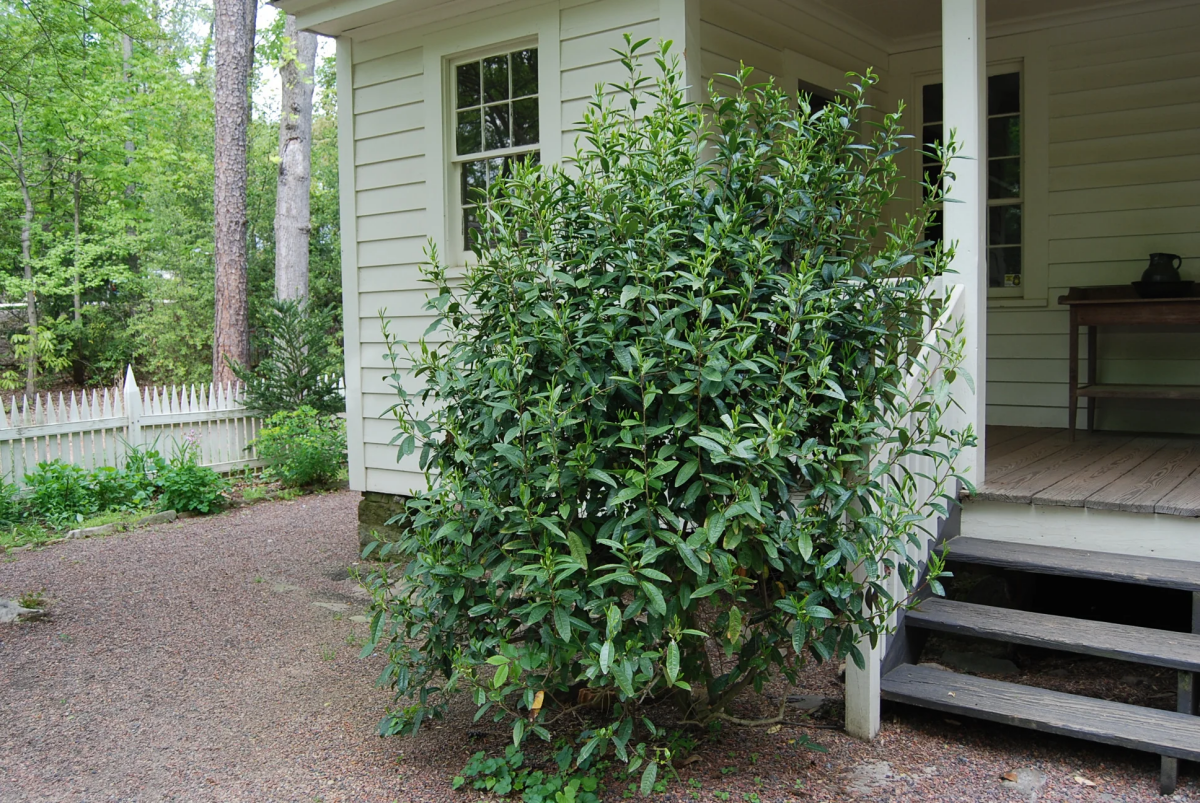
6. Camellia
Camellias are the undisputed queens of the cool-season garden. Their flowers are simply perfect, looking like waxy roses in shades of white, pink, and red. There are two main types you should know. The sasanqua varieties bloom in the fall and are a bit more sun-tolerant. The japonica varieties bloom from winter into spring and prefer more shade. Planting both can give you flowers from October through April!
- Mature Size: Can range from 6 ft. to over 12 ft. tall, depending on the variety.
- Growth Rate: Slow. This is a plant you grow for the long haul.
- Price Range: $40-$75 for a 3-gallon pot, more for larger specimens.
- Deer Resistance: Good.
Like Azaleas, they need acidic, well-drained soil. The most common complaint I hear is, “My Camellia buds fall off before they open!” This is almost always caused by a sudden hard freeze or inconsistent watering in the late summer when the buds are forming. Planting them on the north or east side of your house where they’re protected from harsh winter sun is a great trick.
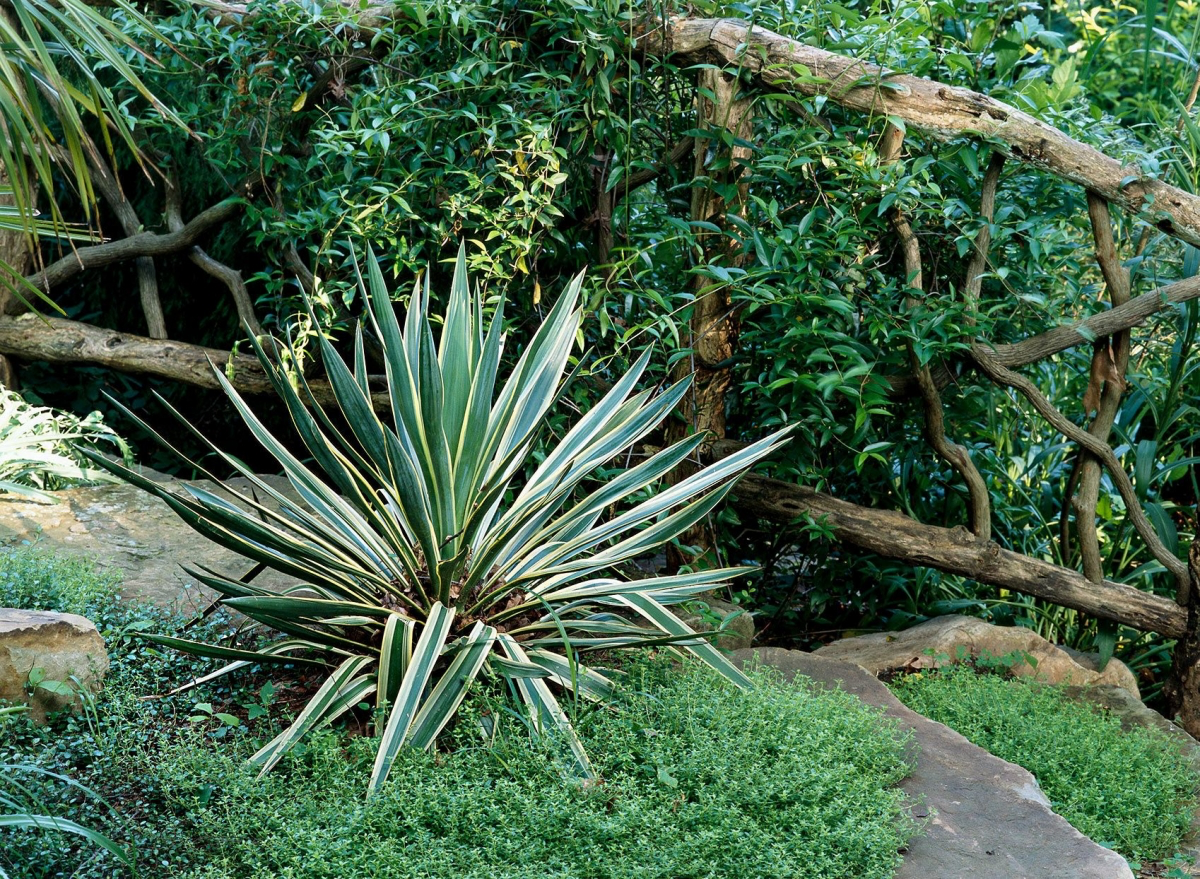
7. Yucca (Adam’s Needle)
When you need a bold, architectural statement, Yucca is your plant. Its spiky, sword-like leaves are dramatic, and it thrives in hot, dry, sandy soil where other plants give up. In summer, it sends up a massive stalk of creamy white, bell-shaped flowers. It’s incredibly tough.
- Mature Size: The foliage clump stays about 2-3 ft. tall and wide, but the flower stalk can shoot up to 6-8 ft.
- Growth Rate: Slow for the foliage, fast for the flower stalk.
- Price Range: Very affordable, often $15-$30 for a good-sized plant.
- Deer Resistance: Bombproof. Nothing eats it.
Just give it sun and drainage. Don’t add compost or rich soil—it prefers to be lean. A word of caution: the leaf tips are genuinely sharp. I never plant it right next to a walkway. The only real maintenance is cutting down the spent flower stalk.
8. California Lilac (Ceanothus)
If you want a true, vibrant blue in your garden, this is your shrub. When it blooms, it’s an absolute showstopper. Native to the West Coast, many varieties can now be grown elsewhere if you get the conditions right.
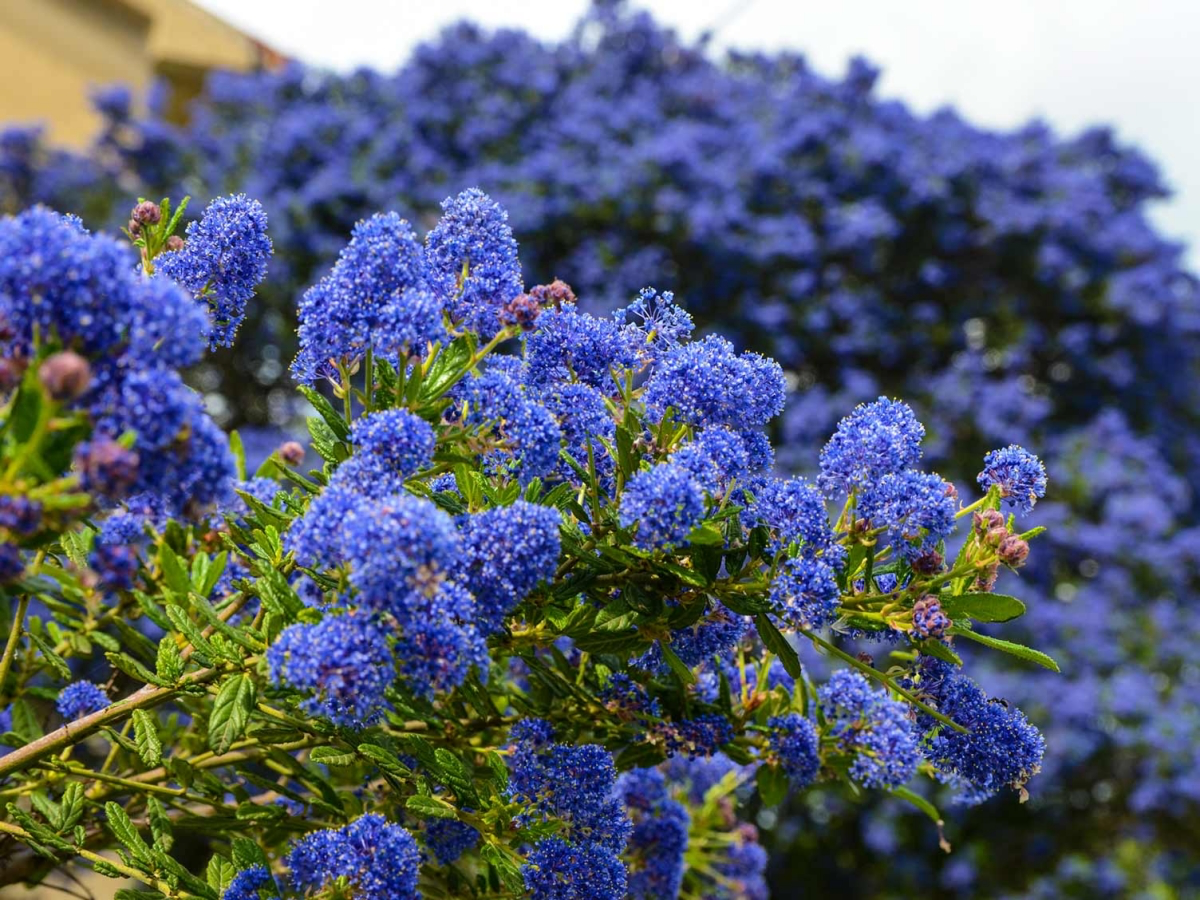
- Mature Size: Huge range from 2-ft. groundcovers to 20-ft. small trees. Read the tag!
- Growth Rate: Fast.
- Price Range: $25-$50 for a 2-gallon plant.
- Deer Resistance: Varies by type, but many are quite resistant.
Here’s the golden rule for Ceanothus: once it’s established, most varieties HATE summer water. I’ve seen so many people kill these with kindness, watering them along with their other plants. They’re built for dry summers. They also dislike hard pruning, so pick a variety that will grow to the size you need. Water it for its first year, then back off and let it thrive on neglect.
A Few Common Mistakes I’ve Seen (and Made!)
We all make them! But if you can avoid these top three blunders, you’ll be way ahead of the game.
- The Bamboo Blunder: Planting running bamboo without knowing what you’re getting into. Please, for the love of your yard and your neighbors, stick to clumping varieties.
- Killing with Kindness: Overwatering and over-fertilizing desert-style plants like Lavender and Ceanothus. They thrive on lean soil and (once established) dry conditions.
- The Bad Haircut: Pruning spring-flowering shrubs like Azaleas and Camellias in the fall or winter. You’re cutting off all of next year’s flower buds! The only time to prune them is right after they finish blooming.
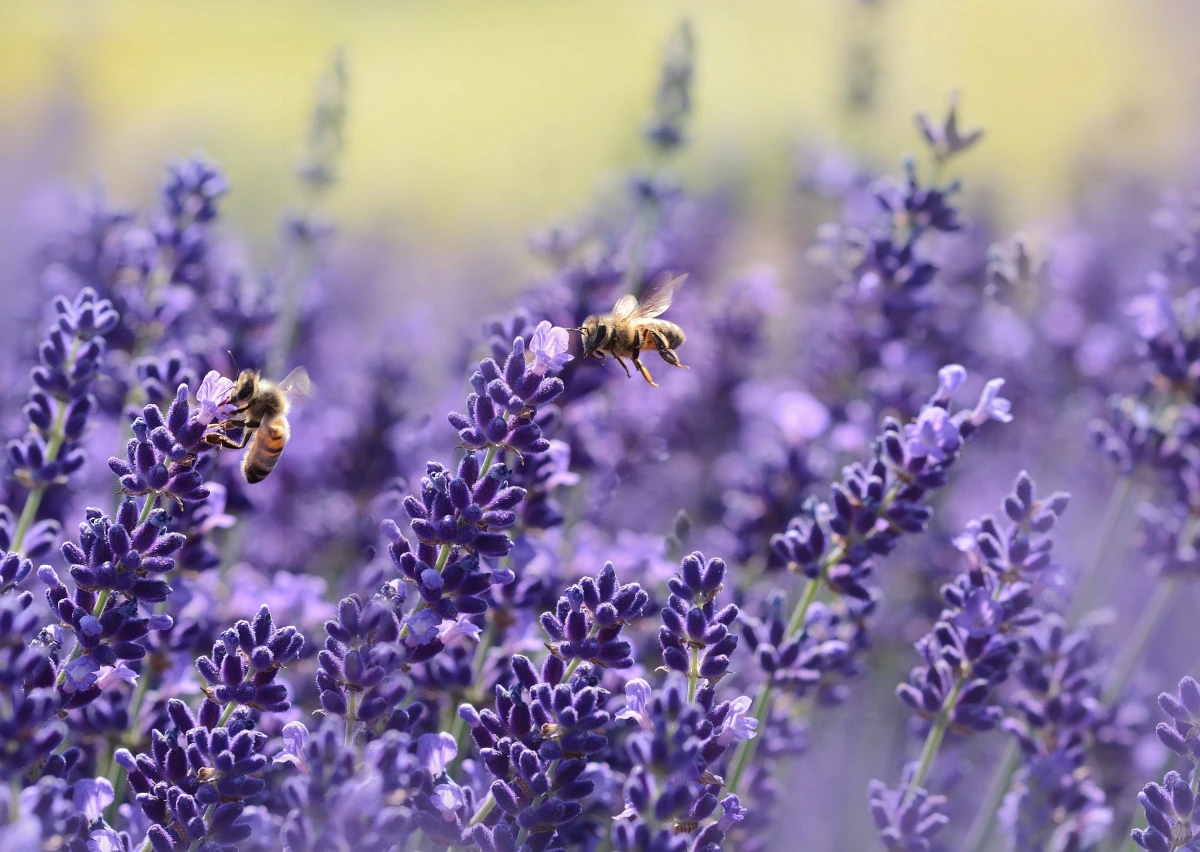
Final Thoughts Before You Head to the Nursery
When you’re at the garden center, look for plants with healthy, vibrant leaves—no yellowing or brown spots. Gently slide the plant out of its pot; you want to see healthy white roots, but not a thick, tangled mat circling the bottom. That means it’s been in the pot too long.
And remember, all good gardening is just a series of experiments. Start with one or two shrubs you love. Watch them, learn their rhythms, and see how they respond to your little corner of the world. Building a garden with a strong evergreen backbone is one of the most rewarding things you can do, giving you something beautiful to look at every single day of the year.










